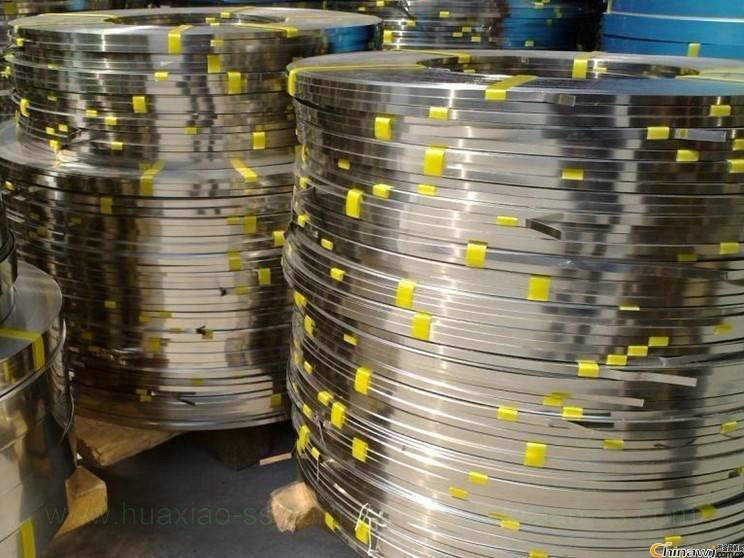
310s Stainless Steel Strip Supplier
- Thickness: 0.03mm – 1.5mm
- Width: 3mm – 600mm, For the wider products pls check in coil products
- Finish: 2B, BA, TR
- TEMPER/Hardness: ANN / Soft, 1/2, 3/4, FH/Full hard, EH, SEH/Super EH
- Coil Diameter /ID: 200mm, 400mm, 510mm, 608mm
- MOQ: 2MT
Product Description of 310s Stainless Steel Strip
310S stainless steel strip is a stainless steel material with extremely high corrosion resistance and high-temperature resistance. It is made from high-quality 310S stainless steel and has a similar chemical composition to 310 stainless steel, but is lower in carbon content, improving its corrosion resistance. 310S stainless steel strip has excellent high-temperature strength and excellent oxidation resistance, making it very stable in high-temperature environments. It also has good plasticity and machinability and can be used to make a variety of complex-shaped parts.
310S stainless steel strip is widely used in high-temperature furnaces, oil and gas processing equipment, chemical industry equipment, heat treatment equipment, food processing equipment, medical equipment, aerospace industry, and other fields. As an excellent stainless steel material, the 310S stainless steel strip has been widely proven to have high trust and wide market demand in these fields.
We, as a professional stainless steel strip supplier, offer high-quality 310S stainless steel strips with customized size, length, and surface treatment according to customer requirements.
Specification of 310s Stainless Steel Strip
Chemical Components of 310s Stainless Steel Strip
| 310 | C % | Si % | Mn % | P% | S% | Cr% | Ni% |
| ASTM | ≤ 0.08-0.10 | ≤ 1.5 | ≤2 | ≤0.045 | ≤0.03 | 24-26 | 19-22 |
| JIS | ≤ 0.08-0.10 | ≤ 1.5 | ≤2 | ≤0.045 | ≤0.03 | 24-26 | 19-22 |
| EN | ≤ 0.08-0.10 | ≤ 1.5 | ≤2 | ≤0.040 | ≤0.015 | 24-26 | 19-22 |
| GB | ≤ 0.08-0.10 | ≤ 1.0 | ≤2 | ≤0.035 | ≤0.03 | 24-26 | 19-22 |
Mechanical Properties of 310s Stainless Steel Strip
| 310s | T.S.(MPa) | Y.S.(MPa) | EL.(%) | HB |
| ASTM | ≥ 520 | ≥ 205 | ≥ 40 | ≤ 217 |
| JIS | ≥ 520 | ≥ 205 | ≥ 40 | ≤ 187 |
| EN | ≥ 520 | ≥ 205 | ≥ 40 | ≤ 217 |
| GB | ≥ 520 | ≥ 205 | ≥ 40 | ≤ 217 |
Physical Properties of 310s Stainless Steel Strip
| 310s | Density (g/cm³) | Melting point (℃) | Thermal conductivity (W/m-K) | Coefficient of thermal expansion (10^-6/K) | Resistivity (μΩ-cm) |
| ASTM | 7.98 | 1398 | 15.1 | 16.8 | 72 |
| JIS | 7.98 | 1398 | 15.1 | 16.8 | 72 |
| EN | 7.98 | 1398 | 15.1 | 16.8 | 72 |
| GB | 7.98 | 1398 | 15.1 | 16.8 | 72 |
Features of 310s Stainless Steel Strip
310s stainless steel strip is known for its excellent high temperature resistance, which makes it ideal for many high temperature applications. 310s stainless steel strip has excellent high temperature stability and is able to maintain stable structure and properties at extreme temperatures. It has excellent high-temperature strength and can withstand stresses and loads in high-temperature environments without softening or losing its mechanical properties. In addition, 310s stainless steel strip exhibits good oxidation resistance and is able to form dense oxide films that effectively prevent the erosion of oxygen and high temperature gases. It also has excellent heat resistance fatigue properties and can remain stable under high temperature cycling and thermal shock conditions. 310s stainless steel strip also has excellent resistance to high temperature corrosion and can resist oxidation, acidic and alkaline corrosion.
310s stainless steel strip is widely acclaimed for its excellent corrosion protection properties. It has good corrosion resistance and can withstand a wide range of corrosive media, including acidic, alkaline and oxidizing media. the high content of chromium in 310s stainless steel strip gives it excellent oxidation resistance, forming a dense protective layer of chromium oxides that effectively prevents further erosion of the base material by oxygen and other corrosive media. In addition, 310s stainless steel strip also contains the right amount of alloying elements such as nickel and chromium, which gives it higher corrosion resistance and pitting resistance. It is able to maintain stable corrosion resistance in humid, acidic, alkaline and high temperature environments and is less prone to corrosion, rusting and cracking.
310s stainless steel strip is highly sought after for its high strength. It has excellent mechanical properties, including high tensile and yield strengths. 310s stainless steel strip owes its high strength mainly to the alloying elements and special heat treatment processes involved. Among them, the high content of chromium and nickel elements contributes to the strength of the stainless steel strip and gives it excellent tensile and yield strengths. In addition, the appropriate addition of other alloying elements, such as molybdenum, vanadium and titanium, further enhances the strength properties of 310s stainless steel strip.
The high strength allows 310s stainless steel strip to excel in a variety of applications. It is able to withstand stresses under high pressure and heavy load conditions and maintain a stable shape and structure.
310s stainless steel strip is widely recognized for its good resistance to oxidation. Oxidation resistance refers to the ability of a material to resist oxidation reactions and surface corrosion in an environment of high temperatures, oxygen and other oxidizing media.
The alloying elements in 310s stainless steel strip, especially the high content of chromium and nickel, give it excellent oxidation resistance properties. The chromium element is able to form a dense chromium oxide film (Cr2O3) on the surface of the stainless steel strip, effectively blocking the attack of oxygen and other oxidizing media. This chromium oxide film has good stability and adhesion, and can effectively protect the surface of the stainless steel strip from further oxidation and corrosion.
The oxidation resistance of 310s stainless steel strip makes it excellent in high temperature environments. It can withstand oxidizing atmospheres and thermal cycling at high temperatures without significant oxidation and deformation. This makes 310s stainless steel strip widely used in applications such as high temperature equipment, furnaces and heat exchangers.
In addition, 310s stainless steel strip has a low coefficient of thermal expansion and better thermal stability compared to many other materials. This means that under high temperature conditions, 310s stainless steel strip has less dimensional change and is able to maintain structural stability and accuracy.
310s stainless steel strip is widely acclaimed for its excellent heat-resistant fatigue properties. Thermal fatigue resistance refers to the ability of a material to maintain structural integrity and performance stability under cyclic loading at high temperatures.
310s stainless steel strip has a low coefficient of thermal expansion and good thermal stability at high temperatures, which allows it to withstand high-temperature cyclic loading without easily undergoing plastic deformation, cracking or damage. It is able to maintain stable strength and ductility under high temperature cyclic loading without significant deformation or failure.
In addition, the alloying elements in 310s stainless steel strip, particularly the high levels of chromium and nickel, provide additional heat-resistant fatigue properties. These alloying elements are capable of forming a stable oxide layer that provides additional protection and stability against surface oxidation and corrosion of the material in high temperature environments.
310s stainless steel strip is widely regarded for its excellent resistance to high temperature corrosion. In high temperature corrosive environments, 310s stainless steel strip can exhibit excellent corrosion resistance, maintaining the structural integrity and chemical stability of the material.
310s stainless steel strip is mainly composed of chromium, nickel and a small amount of alloying elements, which give it excellent corrosion resistance. The high content of chromium, in particular, enables 310s stainless steel strip to form a dense and stable chromium oxide layer, preventing the erosion of external oxygen and corrosive media. At the same time, the presence of nickel further enhances its corrosion resistance and oxidation resistance.
310s stainless steel strip can resist a variety of corrosive media at high temperatures, including high-temperature oxidizing atmosphere, high-temperature water vapor, sulfuric acid, acidic salt solution, etc.. It maintains the corrosion resistance of the material at high temperatures and is not susceptible to oxidation, corrosion, damage or failure.
Application of 310s Stainless Steel Strip
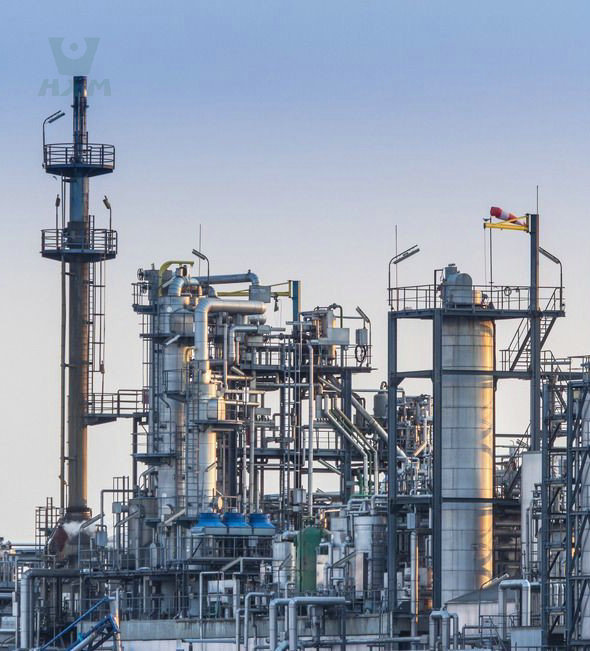
chemical industry
310s stainless steel strip has a wide range of applications in the chemical industry, suppliers like stainless steel strip supplier offer high quality products for this industry. Due to its excellent corrosion resistance and high temperature stability, 310s stainless steel strip is widely used in the manufacturing and processing of chemical equipment. In the chemical industry, 310s stainless steel strip is commonly used in the manufacture of equipment such as reactors, storage tanks, piping and heat exchangers that need to resist high temperature, corrosive media. In addition, 310s stainless steel strip is also used to manufacture components such as piping, valves and pumps for the transport of chemicals to ensure their reliability and durability in harsh chemical environments. stainless steel strip supplier offers 310s stainless steel strip that meets the standards and needs of the chemical industry, providing a reliable material solution for chemical companies.
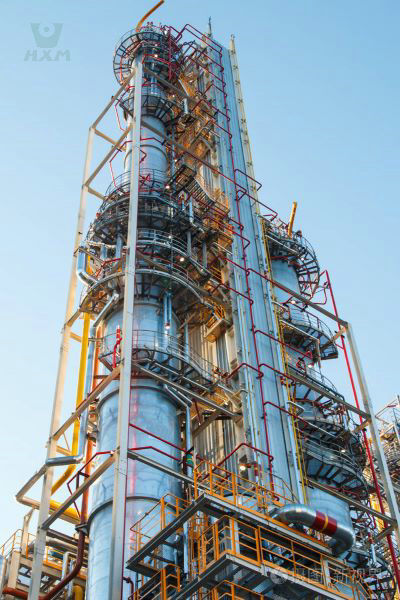
oil and gas industry
310s stainless steel strip has a wide range of applications in the oil and gas industry, suppliers such asstainless steel strip supplier provide high quality products for this industry. Due to its high temperature resistance, corrosion resistance and good mechanical properties, 310s stainless steel strip is widely used in oil and gas extraction, storage and processing. In oil wells, 310s stainless steel strip is commonly used to manufacture tubing, casing and well fittings, which can withstand high pressure, high temperature and corrosive media, and ensure stable and safe operation of the well. In refineries and natural gas processing plants, 310s stainless steel strip is used to manufacture equipment such as reactors, storage tanks, heat exchangers and piping to cope with the harsh conditions of high temperature, high pressure and corrosive media. stainless steel strip supplier offers 310s stainless steel strip that meets oil and gas industry standards, ensuring long-term operation and equipment in harsh environments safety in harsh environments.
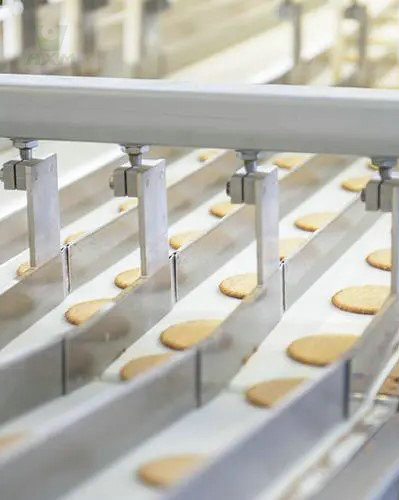
food processing industry
310s stainless steel strip has a wide range of applications in the food processing industry, suppliers such asstainless steel strip supplier provide high quality products for this industry. Due to its excellent corrosion resistance, high temperature resistance and sanitary properties, 310s stainless steel strip is widely used in the manufacture of food processing equipment. 310s stainless steel strip is commonly used to make parts of food processing machinery, conveying systems and containers, such as conveyor belts on food processing lines, heating elements for ovens, sealing rings for food tanks and mixing blades for food mixers. Due to its corrosion resistance and high temperature resistance, 310s stainless steel belt is able to withstand corrosive food ingredients and high temperatures during food processing and ensure the hygiene and safety of the products. At the same time, 310s stainless steel strip also has good machinability and wear resistance, which can meet the requirements of food processing equipment for precise processing and long-term use. stainless steel strip supplier provides 310s stainless steel strip that meets food safety standards, safeguarding food quality and consumer health.
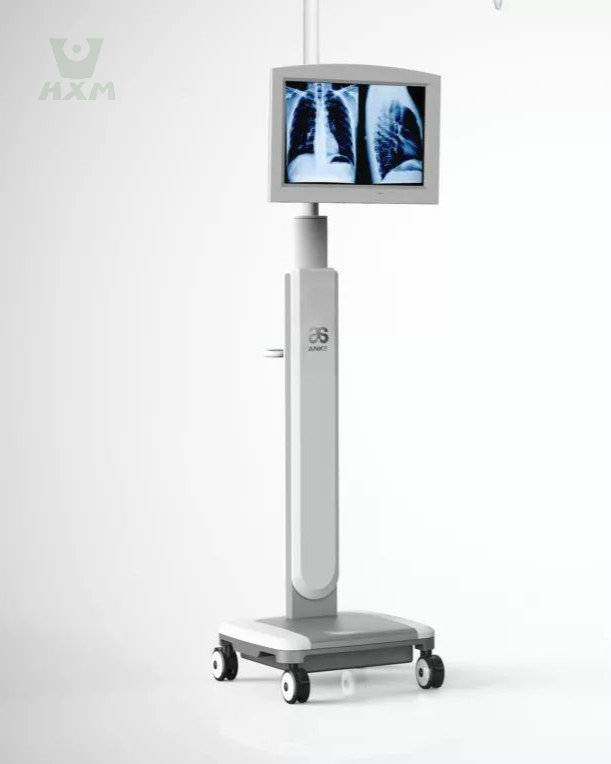
medical device industry
In the manufacturing process of medical devices, 310s stainless steel strip is commonly used to make components for surgical instruments, medical instruments and implantable devices. It can be used to make surgical blades, forceps, syringes, and implantable medical devices, among others. The excellent corrosion resistance of 310s stainless steel strip against in vivo fluids and chemicals, as well as its good malleability and machinability, make it suitable for the manufacture of medical devices of various shapes and sizes. In addition, the high surface finish of 310s stainless steel strip is free of burrs and minor defects, which helps reduce bacterial growth and contamination, meeting the requirements of medical devices for hygiene and cleanliness. stainless steel strip supplier provides 310s stainless steel strip that meets medical industry standards, safeguarding the medical industry's requirements for material quality and hygiene standards.

automotive industry
310s stainless steel strip can be used to make exhaust system components, such as exhaust pipes and exhaust hoses, as well as components in turbochargers and exhaust gas treatment systems. 310s stainless steel strip can also be used to make fuel system components, such as fuel delivery pipes and fuel injector parts. In addition, it is used to make other automotive components such as sensors, battery components and brake system components. 310s stainless steel strip's corrosion resistance enables it to withstand corrosive substances and harsh environmental conditions on the road, thereby extending the life of automotive components. Its high strength properties make automotive structures stronger and more reliable. At the same time, 310s stainless steel strip has good plasticity and machinability, which can be processed in various shapes and sizes according to the requirements of automotive design.
FAQ
310s stainless steel strip differs from 310 stainless steel strip in chemical composition, mainly in carbon content and content of alloying elements. 310s stainless steel strip has a lower carbon content, usually below 0.08%, while 310 stainless steel strip has a higher carbon content, usually below 0.25%. In addition, more alloying elements, such as chromium, nickel and molybdenum, are added to 310s stainless steel strip to improve its resistance to high temperature corrosion and heat resistance.
Due to the difference in its chemical composition, 310s stainless steel strip has better high temperature resistance and corrosion resistance. It can maintain good strength and oxidation resistance in high temperature environments and has better corrosion resistance, including acid and alkali resistance.
In terms of application, due to the excellent performance of 310s stainless steel strip, it is usually used in heat treatment equipment, furnaces, burners, petrochemical equipment and chemical, medical and food processing in high temperature environments. While 310 stainless steel strip is more common in some low temperature and ambient environment applications.
310s stainless steel strip can be processed and formed in a variety of processing methods to meet different needs and application scenarios. The following are some common processing methods for 310s stainless steel strip:
Cutting: Using cutting tools, such as shears, wire cutters, cutting discs, etc., 310s stainless steel strip is cut to the desired size and shape.
Bending: By applying appropriate bending tools and methods, the 310s stainless steel strip is bent into the required curvature or shape.
Reeling: Using rolling equipment, 310s stainless steel strip is processed through rolls to form a specific texture or thickness.
Stamping: Using stamping equipment and dies, the 310s stainless steel strip is stamped and shaped according to the design requirements to produce the desired shape such as holes, bumps or depressions.
Rolling: The 310s stainless steel strip is rolled into rolls by rolling equipment for easy storage, transportation and use.
Welding: Using appropriate welding methods, such as TIG welding, MIG welding, etc., the two ends or connecting parts of 310s stainless steel strip are welded to form welded joints.
Surface Treatment: Including polishing, sandblasting, pickling and other surface treatment methods are used to improve the appearance quality and surface finish of 310s stainless steel strip.
Huaxiao stainless steel strip supplier can be combined and adjusted according to specific needs to meet the requirements of different customers.
The common surface treatment methods for 310s stainless steel strip include the following:
Polishing: Through mechanical polishing or chemical polishing, the surface of 310s stainless steel strip is given a smooth and bright effect. Polishing can remove the oxidation layer, dirt and defects on the surface and improve the surface quality and aesthetics of the stainless steel belt.
Sandblasting: Using high-speed sandblasting equipment to blast fine abrasive particles onto the surface of 310s stainless steel belt to remove oxidation layers, dirt and imperfections. Sandblasting can produce a rough surface texture and increase the adhesion and aesthetics of the stainless steel belt.
Pickling: An acidic solution is used to soak or spray the 310s stainless steel strip to remove the oxide layer, dirt and rust from the surface. Pickling can restore the bright surface of the stainless steel strip and improve its corrosion resistance.
Electroplating: The 310s stainless steel strip is dipped into an electroplating solution to form a metallic coating on its surface through an electrochemical reaction, such as chromium plating, nickel plating, etc. Electroplating can provide an additional protective layer of stainless steel strip, increasing its corrosion resistance and decorative effect.
Coating: A protective layer is formed by coating with special anti-corrosion, anti-oxidation or decorative coatings. Coating can improve the appearance, corrosion resistance and wear resistance of 310s stainless steel strip.
Huaxiao stainless steel strip supplier can be combined and applied according to different needs to meet specific functional requirements and aesthetic needs.
The service life of 310s stainless steel strip depends on several factors, including the use environment, operating conditions, maintenance and specific application requirements. In general, 310s stainless steel strip has good corrosion resistance, high temperature resistance and oxidation resistance, enabling it to be used under harsh conditions for a long time. The following are some common factors affecting the service life of 310s stainless steel strip:
Corrosive Environment: The service life of 310s stainless steel belt in corrosive media depends on factors such as the chemical composition, concentration and temperature of the medium. In general, 310s stainless steel belt has good corrosion resistance to most acidic, alkaline and oxidizing media.
Temperature: 310s stainless steel strip has excellent resistance to high temperatures, and its structure and properties remain stable when used in high temperature environments. However, exceeding its design temperature range or prolonged exposure to high temperatures may reduce its service life.
Stress and Strain: The service life of 310s stainless steel strip is also affected by stress and strain. Excessive stress or strain may lead to deformation, fracture or fatigue failure of the 310s stainless steel strip, so proper design and use practices are critical to extending its service life.
Care and Maintenance: Proper cleaning, protection and maintenance on a regular basis is essential to maintain the performance and appearance of 310s stainless steel belts. Especially when used in exposure to harsh environments, high temperatures or corrosive media, enhanced maintenance measures are required.
To ensure that the performance and appearance of 310s stainless steel strip remains optimal and to extend its service life, the following are some common maintenance and care recommendations:
Regular Cleaning: Wipe the surface of the stainless steel strip with a mild detergent and soft cloth to remove dust, dirt and fingerprints. Avoid cleaning with abrasives or rough materials that can scratch the surface.
Prevent Contaminants from Adhering: Avoid contact between the stainless steel strip and surfaces with contaminants or corrosive substances, such as acids, alkalis, salts, etc. Remove contaminants in time to avoid damage to the stainless steel strip.
Avoid Mechanical Damage: Avoid using sharp tools or metal objects in direct contact with the stainless steel belt to avoid scratching or scraping the surface.
Prevent Corrosion: For stainless steel strip exposed to wet environment or corrosive media, consider using anti-corrosion coating or taking anti-corrosion measures, such as coating antirust agent, regular painting, etc.
Pay Attention to Temperature Control: 310s stainless steel belt has good high temperature resistance, but in extreme high temperature or long time high temperature use, still need to pay attention to temperature control, to avoid excessive high temperature on the stainless steel belt has adverse effects.
Regular Inspection: regularly check the surface condition of the stainless steel belt, including the presence of damage, rust, deformation and other problems. If abnormalities are found, take timely measures to repair or replace to avoid further expansion of the problem.
Use Proper Storage: Store stainless steel strip properly, avoid prolonged exposure to wet, acidic or alkaline environments, and choose a dry, well-ventilated storage location.
Follow manufacturer’s guidelines: Follow the use and maintenance guidelines provided by the stainless steel belt manufacturer to ensure proper use and care practices.
310s stainless steel strip and 304 stainless steel strip are two common stainless steel materials, which have some differences in chemical composition, physical properties and applications.
Chemical Composition: The main chemical composition of 310s stainless steel strip includes: chromium (Cr) is about 24-26%, nickel (Ni) is about 19-22%, and also contains a small amount of carbon (C) and manganese (Mn). The main chemical composition of 304 stainless steel belt includes: chromium (Cr) is about 18-20%, nickel (Ni) is about 8-10.5%, also contains a small amount of carbon (C) and manganese (Mn).
Corrosion Resistance: 310s stainless steel strip has higher corrosion resistance compared to 304 stainless steel strip. Due to its higher chromium and nickel content, 310s stainless steel strip performs better in high temperature and corrosive environments, resists acidic and alkaline media, and has better resistance to oxidation.
Physical Properties: 310s stainless steel strip has higher tensile strength and thermal expansion resistance compared to 304 stainless steel strip. It can maintain better mechanical properties and dimensional stability under high temperature conditions.
Application Areas: Because of its excellent resistance to high temperature and corrosion, 310s stainless steel belt is commonly used in high temperature environments for furnaces, heat exchangers, burner parts, chemical storage and transportation equipment, etc. And 304 stainless steel strip has good corrosion resistance in general environment, suitable for manufacturing kitchenware, architectural decoration, medical equipment and other fields.
Get In touch
Ready to Elevate Your Projects? Dive into our Stainless Steel Collection and Submit Your Specifications Today!
Phone/WhatsApp/WeChat:
+86 13052085117
Email: [email protected]
Address: RM557, NO.1388 Jiangyue Road, Shanghai China



